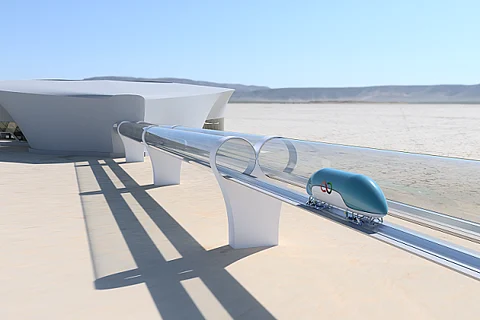

Sibesh Kar was just 19 years old when Tesla CEO Elon Musk, the Tony Stark of real world, announced in 2015 that he was throwing open a global competition with the SpaceX Design Weekend, seeking proposals for the best Hyperloop pod prototype designs. Kar was a fan of Musk already, so he didn’t need much convincing to take up the challenge, but that the Hyperloop could revolutionize cargo and passenger travel in the world was indeed inspiring.
With the Ministry of Railways and the Indian government making much noise about it, there is a lot of buzz on Hyperloop. But what exactly is it?
The concept of Hyperloop, which Musk calls the fifth mode of transportation, is to eliminate air resistance and contact friction to increase the speed of travel – it is to create a mode of transport in vacuum. Designing such a thing was no mean task, so Musk proposed an open design challenge under Space Exploration Technologies Corporation (SpaceX), also founded by him. The concept was to take ideas from across the world and develop them further.
With the idea of bringing Hyperloop to India in mind, Kar formed a team of three in his college, BITS Pilani, and entered the competition. After successfully making it to round two, Kar realized that there were more skillsets required to develop the various technologies and subsystems involved in the Hyperloop. He soon brought on board a number of other students from engineering and management backgrounds.
Sibesh Kar (third from left) with a part of the Hyperloop India team
Cut to 2017 - the team is now 70-member strong and has engineers from across BITS colleges and management students from the Indian School of Business (ISB) and IIM Ahmedabad. Having christened themselves Hyperloop India, they have submitted their final design report, which SpaceX has approved. The team is also one among the 35 semifinalists in Hyperloop One’s global challenge on the feasibility of Hyperloop. Hyperloop One is a US-based company - independent of SpaceX - that is trying commercialize Hyperloop.
As a part of this competition, Hyperloop India has suggested a corridor from Mumbai to Chennai via Bangalore. This 1,102-kilometre route can be covered in 50 minutes on the Hyperloop. As per their submission, this corridor will reduce cargo travel time between the Arabian Sea and Bay of Bengal from three days to less than 3 hours. “The same tracks can be used to link the vast populations, economies and diverse cultures of the large urban agglomerations of Mumbai, Bangalore, and Chennai,” their case study states.
Currently, Hyperloop India’s focus is entirely on building a pod to be represented at SpaceX’s design challenge in September. A pod is the vehicle which will travel through the Hyperloop. It needs to manufacture and fabricate India’s first pod prototype.
"Our team is currently focussed on creating a stakeholder network to develop the prototype and transport it to California. As per our estimates, the entire process will cost us Rs 60 Lakhs. This includes manufacturing, fabrication, engineering assistance, review and survey, and transportation,” says 20-year old Prithvi Sankar, who is a part of the business development team at Hyperloop India.
So, what is this pod that they’re building? Hyperloop India’s prototype will be called OrcaPod, which can reach speeds of up to 460 kmph. Sankar says that the OrcaPod is one of the most inexpensive pods as compared to its rivals.
There are various stakeholders involved in helping Hyperloop India realizing the dream of Hyperloop. As it builds its first prototype, the team is working with Invest India, which is helping it reach out to the right people and avail R&D funding from various organizations.
The Rail India Technical and Economic Service (RITES), a public service undertaking which does engineering consultancy in the field of transport infrastructure, is also helping Hyperloop India with its feasibility case study. It is also working with them to explore how Hyperloop could be what Mission 350 Plus is looking to achieve. Niti Aayog, too, is pitching in.
The Ministry of Railways announced the Mission 350 Plus to explore a levitation-based technology that can reach speeds of more than 350 kmph. The aim to introduce high-speed magnetic levitation spends in the country and implement at least the first stretch in less than three years.
So, will winning either or both of the competitions mean India will soon have its first Hyperloop corridor? The entire idea is only still at the conceptual stage. Sankar says that the technology exists, but it is all about bringing them together. Even in terms of the competition, there is a long way to go. But if Hyperloop India manages to win, that will definitely push further the advent of the Hyperloop in India.